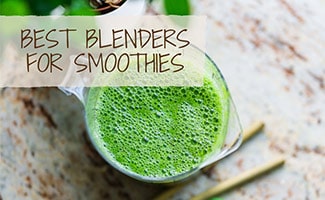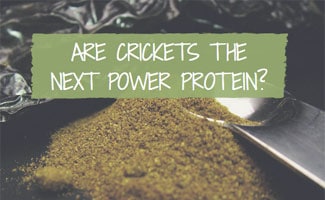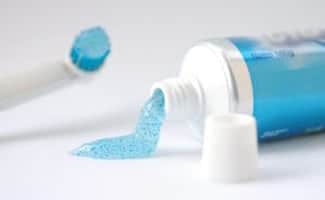Oxybenzone: The Cancer Of Sunscreen?
 Great skin and maintaining a youthful appearance well into your 30s, 40s and beyond depends on more than just the face moisturizer you are using. Many dermatologists will tell you diet and wearing sunscreen on a daily basis are probably just as, if not, more important. In summer, sunscreen is an essential part of life but what about the rest of the year?
Great skin and maintaining a youthful appearance well into your 30s, 40s and beyond depends on more than just the face moisturizer you are using. Many dermatologists will tell you diet and wearing sunscreen on a daily basis are probably just as, if not, more important. In summer, sunscreen is an essential part of life but what about the rest of the year?
I know that I am guilty of not applying sunscreen on a daily basis and have often relied on my skin moisturizer, which used to include it. But I definitely do not reapply throughout the day. So again, imagine my surprise when I started to research sunscreens and found that there is a controversial ingredient, oxybenzone which is used in more than 600 sunscreens here in the United States.
Here’s my research on the potentially hazardous ingredient and some recommendations on the best oxybenzone-free sunscreens for your needs.
Article Overview
- What Is It?
- Does It Cause Cancer?
- Best Sunscreens
- How Often To Apply?
- Sunscreen Infographic
- Other Hazards
What Is Oxybenzone?
What exactly is oxybenzone? It is an organic compound used in sunscreens because of its ability to absorb UVB and short UVA rays. As a chemical ingredient, it is also helpful in maintaining the qualities of other ingredients and therefore you will also find it used in conjunction with other chemical ingredients in other personal care products such as lotions, lipstick and nail polish. As an ingredient in products, it may be referred to as Benzophenone-3.
Oxybenzone May Cause Skin Cancer
So why be concerned about this ingredient if it does what it’s supposed to as far as sunscreen is concerned? Apparently, oxybenzone has been shown in studies to penetrate the skin and causes photo-sensitivity and it is also known as a “penetration enhancer,” meaning it helps other ingredients to penetrate the skin more easily. Photo-sensitivity is sometimes known as a sun allergy and results in easier sun burning or extreme reactions of the skin when exposed to sunlight.
The Center for Disease Control and Prevention concluded a study (National Health and Nutrition Examination Survey) in 2008, where 96.8% of urine samples that had been collected and examined were shown to contain oxybenzone. Basically, this means that if you have used sunscreen with this ingredient, your body has stored it in fatty tissues for up to a few days.
The Environmental Working Group (EWG) and other toxicology experts are concerned that there is a link between oxybenzone, hormone disruption and allergies. And some evidence has shown that oxybenzone potentially causes cell damage (attacking DNA cells) as a photocarcinogen, which may lead to skin cancer.
Even though there is some scientific evidence suggesting harmful effects of this ingredient, both the American Academy of Dermatology and the FDA say oxybenzone is safe for use for both children over the age of 6 months and adults, but only in concentrations of 6% or less in over the counter sunscreens.
In the EU, they have deemed the ingredient to be safe in concentrations of 10% or less, but do require packaging to state that the ingredient is present when used in concentrations of .5% or more. And it should be noted, that Sweden has completely banned the use of this ingredient.
Picking The Best Sunscreen
So, what can one do? Ideally, it is best to use a sunscreen that is labeled as being broad spectrum. This means that it will protect against UVB rays, which are the ones that cause sunburn and against UVA radiation which is what causes aging and skin damage.
It is also important to consider the level or number SPF (Sun Protection Factor) you are using. Once you start getting into the higher SPF sunscreens, the level of protection is minimal in comparison to that of a lower sunscreen SPF. For example, a sunscreen with SPF 15 has been shown to block around 93% of incoming UVB rays. A sunscreen with SPF 30 blocks 97%, while one with SPF 50 blocks 98%. And SPF only protects against UVB rays, not UVA, hence why it is important to look for sunscreens labeled as broad spectrum.
Because there has been growing concern in the marketplace with oxybenzone and its use in sunscreen, there are more options now available. If you are concerned, look for sunscreens which are labeled broad spectrum and contain no Benzophenone-3. Make sure they have a minimum SPF-15 and no more than an SPF-50, and if we are talking about sunscreen for your face, stick with an SPF-30 for the best protection.
Best Oxybenzone-Free Sunscreen – Overall: Blue Lizard Australian Sunscreen
This sunscreen received a rating of 1 on the Environmental Working Group website (please note that EWG ranks products based on 0 to 10 with 0 being the least hazardous to your health and 10 being the worst. Generally a rating of 0-2 presents low hazards). We chose this for our personal use initially because of the great value (bigger bottle for less money!) but it also turned out to be one of the smoother to apply and soak in.
Further, this particular product has mostly positive reviews on Amazon (4.5 out of 5 stars) so customers have been happy with it too. We can also recommend the baby version of this product (also a 1 rating from EWG).
Price: Check Amazon for availability for 5-Ounces
Best Sunscreen For Kids: Beautycounter Protect All Over Sunscreen SPF 30

Even though this sunscreen is not specifically for children, it can also be used safely on kids. It’s broad spectrum, SPF 30 and if it’s safe enough to use on your children, it’s definitely safe enough to use on yourself. (By the way, this rule applies to most things in life.) FYI – this item also gets a 1 on the EWG rating scale.
The Blue Lizard products reviewed on this page are also kid-friendly so feel free to slather them on the entire family!
Price: $32 for 4.8-Ounces
Best Baby Sunscreen: Blue Lizard Baby Australian Sunscreen
If you are looking for a baby-specific product, we can also recommend the Blue Lizard Baby SPF 30+ product. Read our review of Blue Lizard products in the Best Overall section above.
Price: Check Amazon for availability for 5-Ounces
Best Sport & Beach Sunscreen: Blue Lizard Australian Sunscreen
Again, the Blue Lizard brand comes out on top for the highest rated and best value sunscreen for the beach and your outdoor activities. The bottle is UV-sensitive so it turns blue when it is exposed to UV light, making this a fun and magical color change when you are out having fun in the sun with this sunscreen in-hand.
Price: Check Amazon for availability for 5-Ounces
Best Moisturizer with Sunscreen: ThinkSport Everyday Face
This sunscreen is rated a 1 on EWG.org’s 2017 sunscreen guide. The price point is good also relative to the natural and healthy competition on a per ounce basis, especially for a 1 rated product! The reviews on Amazon are quite positive (4 out of 5 stars too), especially for people looking for an all-natural product that does not leave a thick, white residue. It applies smoothly. The only complaint is that it comes in a jar vs. a pump.
Price: Check Amazon for availability for 4-Ounces
How Often Should I Apply Sunscreen?
Be sure to reapply, reapply, reapply (that’s for my benefit as well) every couple of hours, because the sun breaks down the organic chemical ingredients which are supposed to be protecting your skin. Even if you don’t plan on being out in the sun for a long period of time, it’s still important to have some form of sunscreen on your face, neck and hands.
We often forget that those areas are always exposed. And if your moisturizer does not contain SPF, it’s best to apply your sunscreen to your face before applying your moisturizer to allow it to be absorbed by your skin to provide the best protection.
Guide to Sunscreen Infographic
To summarize everything in what to look for in a sunscreen, we put together this infographic to reference.
[infographic id=7395]
Other Hazards In Our Beauty Products
In addition to sunscreen, there are other toxic chemicals hiding in our everyday beauty products. Lotions can contain parabens and deodorants sometimes have aluminum which can be a hazard to our health. Make sure you are being just as careful about what you’re putting on your body ad you are what you’re putting in it.
What is your favorite brand of safe sunscreen?
Sources:
wikipedia.org/wiki/Oxybenzone
www.thedailygreen.com/environmental-news/latest/oxybenzone-sunscreen-ingredient
www.cnn.com/2012/05/16/health/sunscreen-report/index.html
www.truthinaging.com/ingredients/oxybenzone
www.webmd.com/allergies/guide/sun-reactions






